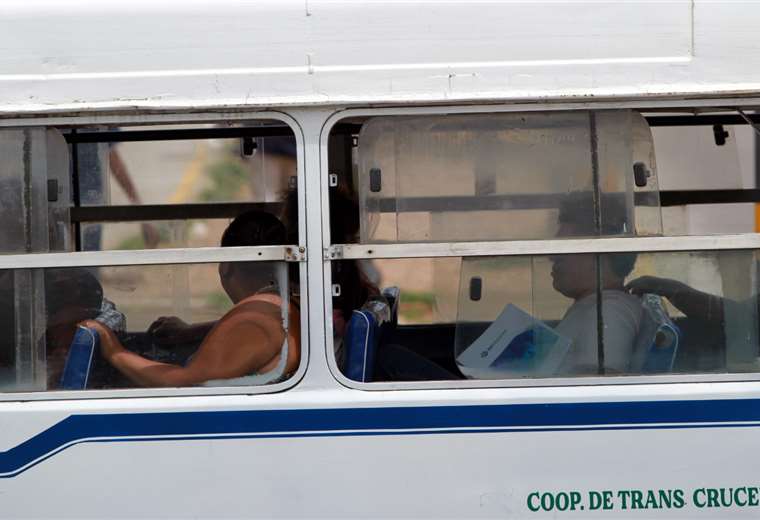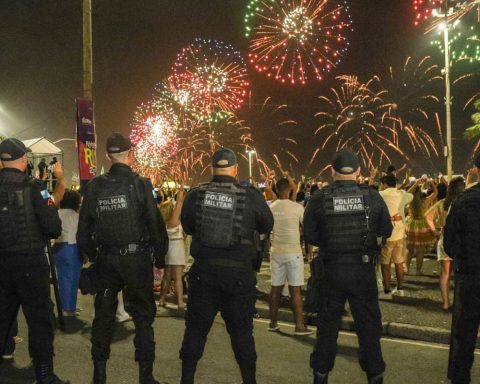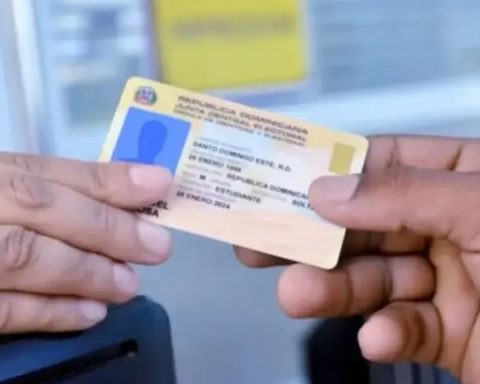December 8, 2024, 4:00 AM
December 8, 2024, 4:00 AM
Julia Durán, a resident of Las Piedades, gets up every day at five in the morning, walks three blocks with her two children to drink the bus and leave them at school. Then he heads to work taking two more buses.
As carriers debate the need to raise rates to offset rising operating expenses, Julia thinks cHow will you collect more than the Bs 20? daily that he now spends on tickets if the authorities give in and approve an adjustment.
She supports her family alone and every month she allocates about Bs 400 for transportationwith a salary of Bs 1,800. “It’s a lot to travel in discomfort,” he says.
Even without an increase in fares, many families “juggle” to cover the cost of the minibus fare, which represents 20% of the monthly budget in many households. Although it is not the most optimal, public transportation continues to be the only mass option for seven out of ten people from Santa Cruz, who depend on buses to get around, according to estimates based on the study carried out by JICA in 2017 as part of the plan to improve the transportation system.
The situation has not changed and so have the conditions of the transport service, which continues to be precarious and expensive for users due to to the cost of the ticket and the loss of time on long journeys.
According to this study, a person spends an average of Bs 8 a day on fares alone, since they use at least two buses. per trip: two to go to the place of work or destination and two more to return home.
For a family with three children, this means a monthly expense of Bs 784, which is equal to 33.1% of a national minimum wage. If the fare increases from Bs 2 to Bs 2.50, This expense will increase to Bs 896, equivalent to 37.9% of the minimum income.
According to calculations presented by the economist and councilor José Alberti, the passage may represent up to 20% of the monthly budget for families.
Alberti maintains that the JICA study showed that seven out of ten Santa Cruz residents use public transportation. Furthermore, 70% of those who use microphones are women compared to 55% men..
It states that the increase in the rate would strongly affect the families’ budget, because every household has its income and expenses calculated, biweekly, weekly or monthly. “It has a high and direct impactbecause the transporters propose a transitional law that approves from Bs 2 to Bs 2.50, which represents a 25 percent increase. In the night rate the increase reaches 50 percent, because they want it to go up from Bs 2 to Bs 3,” points out Alberti, who explains that, according to the Consumer Price Index, people put food first, then the clothing and thirdly the transportation to be able to do their activities.
He states that if any increase in the rate were to occur, it would have repercussions on the household economy, because families would have to adjust their expenses. They will usually stop buying certain foods and clothing. “That would affect their quality of life, that’s why we don’t want to approve an adjustment without technical support and outside the law, because you cannot talk about rates without making improvements in the service,” he emphasizes.
The transportation crisis in Santa Cruz de la Sierra should be used as an opportunity to transform the poor service, says the architect Ernesto Urzagasti, who advocates for a comprehensive change of the system.
Urzagasti states that the situation allows us to put on the table the need for a new transportation system, because when the fare was raised to Bs 2 it was established that the transporters change your units to the natural gas system, renew your buses and make improvements, among other things; However, none of that was done.
“They run a million-dollar business, where the lines cost more than $100,000 and they have entire fleets.” of buses, this must change. It is a historic moment in which we have to grasp it from the economic side, but it has to start with political will,” he highlighted.
He questioned whether the Urban Mobility Law is not being complied with, because only nine of the 126 lines have authorization. “We are totally defenseless, we must change the transportation system and that should be a common cause of citizensfrom the institutions and the entities, because it is the only way to free ourselves from a union that is blackmailing us,” points out the architect.
It points out that the two routes with the highest vehicular flow are the double road to La Guardia and Cristo Redentor, which serve as access for suppliers. and people who go to work in the capital of Santa Cruzso it is necessary to consider transportation corridors. The JICA study established some of these corridors, where larger buses would have to be implemented and others would function as collecting units.
The architect Urzagasti indicates that it is not about increasing the rate, but that an articulated system must be implemented, which allows transfers, without the user having to pay a second or third ticket to reach their destination. He specified that in other countries cards are used to move on different routes.
Councilor Alberti agrees with the need for change and suggests working on a study, on the basis of those already has. Remember that in La Paz to implement the Puma Katari buses they carried out a study that took six months, because Routes, motorized characteristics and coverage were defined.
A system without order
The transportation system that we know has been in operation for more than 50 years, with routes defined by the carriers themselves.
In general, these routes follow a configuration based on rings and radials. Although the authorization for new routes is suspended, many lines have extended their routes to cover high-demand destinations, which has caused an overlap of routes. This competition between operators generates traffic chaos, congestion and an increase in traffic accidents.
Long routes are another characteristic of the current system. A bus can make up to five trips a day, traveling between 150 and 180 kilometers, since the routes usually have an extension of between 30 and 32 kilometers.. The daily income of these routes varies between Bs 400 and Bs 1,000 on lines with greater demand, like those that circulate through the rings.
The cost to put a bus into operation on a line can range between 15,000 and 100,000 dollars, depending of the route accessed, according to data presented to the councilors.


















